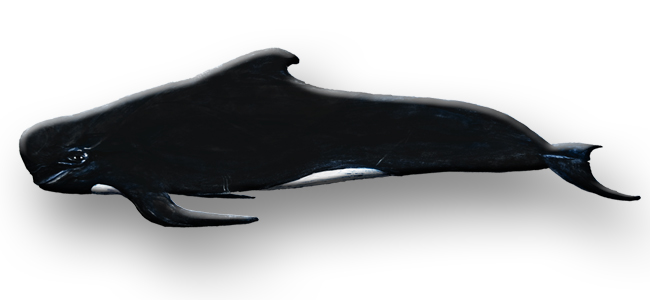Pilot whale
Globicephala melas - Pilot whale
This dolphin is clearly distinguished from the other representatives of the family by the shape of the head and the dorsal fin.
The head, as indicated by the scientific name, is very rounded with the rostrum almost completely absent and the body almost completely black.
The dorsal fin is characterized by a very wide base and a very curved and falcate shape. The pectoral fins are elongated, with the elbow clearly evident in the older specimens.
The pilot whales are decidedly gregarious animals and the groups are often composed of numerous specimens. And this tendency to gregariousness is perhaps at the origin of the mass stranding, typical of the species. Even today it is not possible to provide adequate explanations for these phenomena, but it is believed that the cohesion of individuals leads the groups to follow the specimens in difficulty up to the collective stranding.
The English name "pilot whale" derives from the habit of following large ships near their prow, where they are pleasantly confused with the bulb.
FEATURES
Coloring - Black
Adult length - 6 m
Adult weight - 2000 kg
Birth weight - 90 kg
Diet - Mollusks, Pisces
Group - 10 - 30 individuals
Status - Common
THREATS
Pollution
Excessive fishing
Back to the scheme